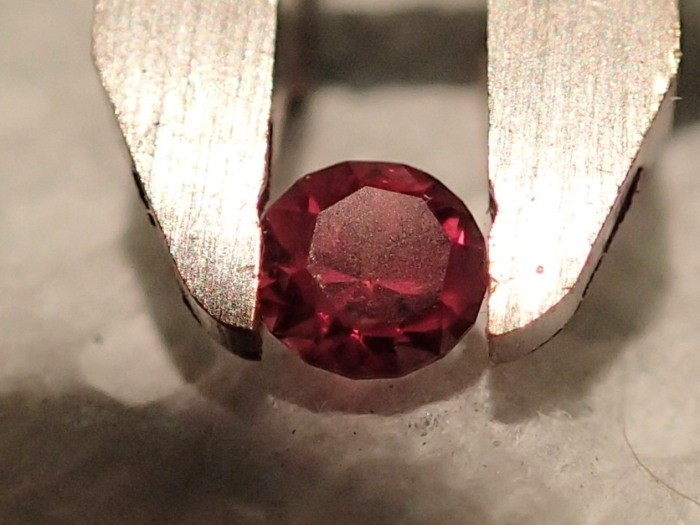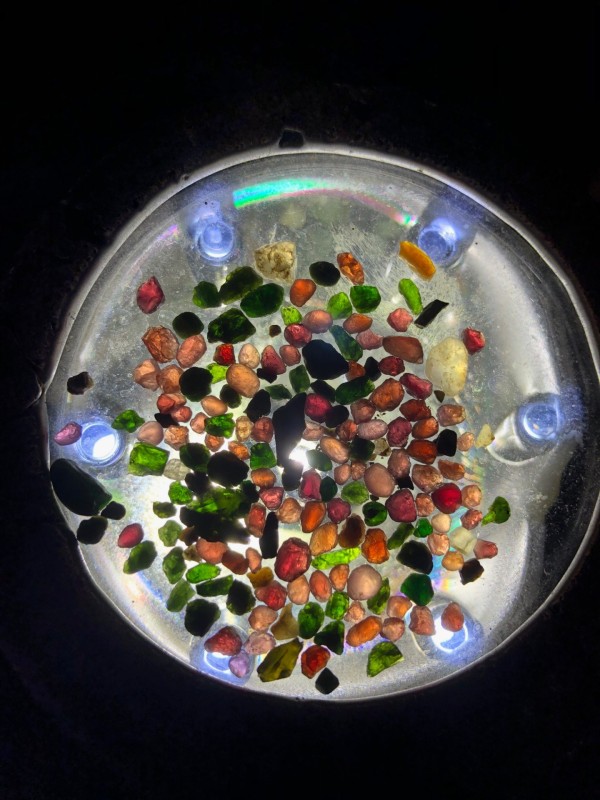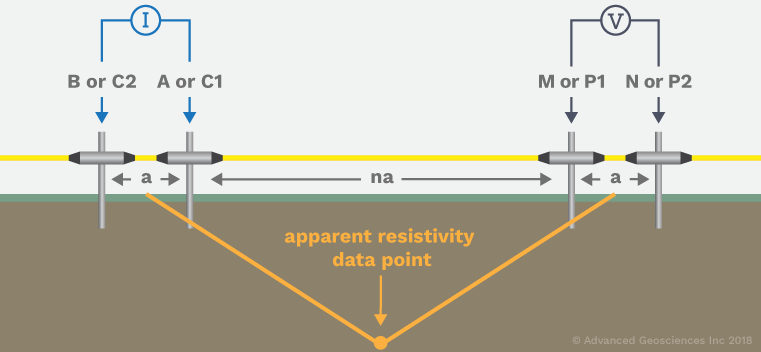-
Posts
762 -
Joined
-
Last visited
-
Days Won
2
Content Type
Forums
Detector Prospector Home
Detector Database
Downloads
Everything posted by Jim in Idaho
-
.thumb.jpg.ac5e8ee36e43bcab745dbc623fcf1874.jpg)
White’s TDI Battery Modifications
Jim in Idaho replied to BeachBunnyTRHunter - DP's topic in White's Metal Detectors
Ya know, Rick, I honestly have no idea. It doesn't say on the label, and I haven't tested it, so I have no way to know. It says ML Professional series, so makes me think it was made for the GPX Series. I'm buried in projects and prospecting, so probably won't be doing any testing for awhile. I'm looking forward to your report on how it does on that mineralized ground. Best of luck! Jim -
.thumb.jpg.ac5e8ee36e43bcab745dbc623fcf1874.jpg)
White’s TDI Battery Modifications
Jim in Idaho replied to BeachBunnyTRHunter - DP's topic in White's Metal Detectors
I like the Sadie, but don't find it much more sensitive than the 7 1/2" DF. Both are very good on the SL, especially with the 16v battery. I also recently bought a 5 x10 Razorback, but have yet to try it. Idaho, and the surrounding states, are really great. I feel fortunate to have spent my adult life here. Wouldn't trade it for any place else on earth. Jim -
.thumb.jpg.ac5e8ee36e43bcab745dbc623fcf1874.jpg)
White’s TDI Battery Modifications
Jim in Idaho replied to BeachBunnyTRHunter - DP's topic in White's Metal Detectors
Yes, your machine has the second Reg mod done by the factory. My swing speed mod made zero difference in ground noise, and I live and detect in a volcanic area with lots of iron basalt and rhyolite. Those caps need to be 1% matched and metal-film. Easy mod to do. If you do some research, there is another sensitivity mod you can do, suggested by another user. I've got it somewhere, but haven't done it yet. I think it's also pretty simple. Jim -
.thumb.jpg.ac5e8ee36e43bcab745dbc623fcf1874.jpg)
White’s TDI Battery Modifications
Jim in Idaho replied to BeachBunnyTRHunter - DP's topic in White's Metal Detectors
Thanks for the update! Looks like you did very well, for your first soldering job. Those surface-mount components are tough to work with. Have you done any of Reg Sniff's mods to your machine? I've done two, and will eventually get to a 3rd that wasn't designed by Reg. I also added vernier knobs to the Threshold and GB controls on mine. Makes razor-edged adjustments really easily. Mine will detect a 1 grain nugget at 3". Keep me updated. I've got a pair of vernier controls, with custom-made mounting hardware. They're the last pair I've got made for now. Not much demand for things for the TDI's anymore. They're $175 shipped CONUS Jim -
Before I did the last mod, Reg had me do a test, and gave me specific ways to do it. I got 16" in an air test with a nickel. Reg said he thought I'd o even better with the 2nd mod in place. I get a response at 3" to a 1 grain bar...that's grain, not gram. I still have one mod to do, that should improve slightly on that. I do think a well-modded TDI pro is slightly better than mine....that's according to karelian's tests, but the difference is very slight. I do like the light weight and handling of the SL. Jim
-
Been telling you guys, these modded TDI Sl's aren't bad...LOL Jim
-
.thumb.jpg.ac5e8ee36e43bcab745dbc623fcf1874.jpg)
White’s TDI Battery Modifications
Jim in Idaho replied to BeachBunnyTRHunter - DP's topic in White's Metal Detectors
It's been awhile since I looked at all this, but if memory serves R9 is the "flyback" resistor, and drains the coil quickly so it can start "listening" for a target response. As such, it would tend to get hot with increased current into the coil. So,I had decided ,if I ever needed to replace it, I would increases the wattage. I don't recall, offhand, the factory wattage. If you determine that pleases post it. Jim -
Welcome from Blackfoot!
-
No, Jason, but I'd venture to guess there are k-pipes there. I know at least one good diamond was found on Cortez creek. My friend from South Africa has several claims on K-pipes a ways east of there. One near Tie Siding, not far from the old Kelsey Lake mine. That's just too far from our place to spend much time there. Jim
-
Steven, it was a company called Diamond-X. Or Diamond-EX....can't remember for certain. I think they drilled 18 different locations if memories serve. Also, I think they found 9 pipes, but that may also be off. I found several of the spots they drilled. There are still old wooden survey stakes laying around. Jim
-
In 12 years of prospecting the Basin, I've never seen a diamond. But I do believe they are there, and I also believe the spot I discovered a few years ago has a high potential for diamonds, Every trip over there, I find new evidence I'm in a good locale. It will either happen this year, or I'll probably give up the search. I will have exhausted the potential, unless something new shows up...as it did on this last trip. There were k-pipes discovered in that area by drilling. None had commercially viable diamond numbers, however. I'm more interested in finding a pocket of placer diamonds. Jim
-
Mike, I do some gem work, but chrome diopside requires some special care because its brittle. I have a couple of gemmy pieces of it, but have yet to attempt faceting it. The pyrope garnets are incredibly beautiful in a "brilliant" cut, but I never find any bigger than 1/4". I'll try and post a pic of a couple I did several years ago. A professional cutter told me he was amazed I managed to get 32 facets into a gem that small...lol. The difficulty is finding chrome diopside with enough clarity in a large enough piece to facet. The two garnets in the pic are only 1/8" in diameter. Jim
-
After our muddy attempt in June, where we had to wait 18 hours for things to dry enough we could turn around and go back home, we finally made it in last week. The roads were dry, and so were all the creeks. Had to haul our ore material 15 miles to find water for the jig. Found considerable amounts of chrome diopside, and, of course, garnets. The majority of what's in the pic came from one small area about 6' x 20' that we scraped the surface gravel off of the first day. We did 3x that amount the second day, and got very little. In between one day we went over and poked around the Butcherknife Draw area, but found little. The spot I found a few miles from Butcherknife is still far and away the richest spot I've found for larger chrome diopside. One weird thing happened on our last day. I had decided to dig a hole to see if I could get down to the false bedrock layer, in the hopes there might be a concentration of gems there. I had to dig through some larger pieces of the false bedrock, which is sort of like caliche. When I got down about 2', I ran into a very dark brown, rich-looking material similar to topsoil, with little gravel in it. After 3 days of digging, classifying, and jigging, I was beat, and gave it up. But, that soil kept nagging at my mind. I have been all over the basin, covering 100 square miles over the last 12 years, and I have NEVER seen soil like that...not once. So, we have to go back. I had no probe to drive in and see how deep it goes, and i was too stupid to think of filling some buckets to bring home, of which I had plenty. So, I've ordered one of those sampling tube augers to take, and will make some extension handles for it, so I can go down at least 10' if it extends that far. Wondering what the soil is will drive me nuts. To be down under the clay layer, it has to be really old....possibly 1,000's of years. Jim
- 16 replies
-
- 16
-

-
LOL...actually no detecting. This a diamond prospecting trip. We tried in June, and got stuck in the mud for 18 hours and came home. Now we're trying again. Jim
-
Thanks, Joe, that's mine. I have one set of those vernier knobs and mounting hardware ready to go right now. Price is $175, shipped in US. We're heading out Sunday and will be gone for a week, so shipping will be slow for a bit, unless purchased immediately. Jim
-
Jason, we're going to be in the South Pass area in August. Right now my unit is on loan to the guy in Montana, but if I get it back in time, I'd be happy to meet you over there, and I can show you what I'm doing. I think you'll like it. Jim
-
Yes....and it really isn't that complicated. We also did a simple 2 probe method, which pretty well matched the dipole setup. In the 2 probe you just drive two probes in the ground at whatever distance you want, and read the input voltage, and the current, and calculate the resistance. The advantage is greater depth. The depth with that setup is equal to the probe spacing, which is roughly double what you get for a given spacing with the dipole array . But, you don't get as much info about what's down there. However, as a quick method to see if there's an anomalously low resistance anywhere as you move along, it's not bad. I found a spot in Calif. near the Nevada border 2 years ago, that has a bunch of copper oxides at an open fault zone over a 50' area. That's a perfect spot for a 2 probe test. I'm going to center over the zone, and do even steps down to see if there's a copper lode hiding down in there. If I get a really low resistance at some point I can do a full array to see what it might be. Jim
-
I got a good laugh at that, Jason...thanks. I'm using the 32 bit version of Res2dinv. And yes...one reading at a time and then moving probes...makes me tired and bored just thinking about it. I'm going to buy enough material to make about 60 probes, so I can put them all in at once, and then just go from reading to reading...should be much faster, and more importantly "less boring"....Ha! Jim
-
For those of you interested, here's an image of what the dipole-dipole array looks like. We were doing our readings at 2 meter intervals, so 25 readings at each depth along the 50 meter line. The formula for "apparent" resisitvity is as follows: Pa= V/I*Pi*n*a*(na+1)*na+2) Jim
-
LOL...I'd love to have one of those 3d units. I could buy a 3d version of the 2d software I'm using, but too spendy for this poor Idaho guy...Ha! The engineer I was training can do 3d CAD, so by running lines at 90 degrees can input the GPS results and build a 3d image. I was using 4 probes. Two pairs of two. I chose a spacing on the probes in each pair as 1 meter. The distance between the inner probe of each pair should be an integer value of the probe spacing. I started at 2 meters, and did a layout for 4 meters and 6 meters, but we never did the 6 meter in the field. I only had the 4 probes, so we had to keep moving the probes as we went along the 50 meter line. very slow, boring work. It would be better to have 55 or so probes and install them along the line and then just go from one to another, according to the desired layout. That would be faster, but it's still a slow process. When I was doing it in Nevada I was down there for 8 days, and working 8 hours/day, and then inputting data in the evening. The more modern (but expensive) units use a separate cable to each probe, and then you push "start", And it automatically, and electrically goes from probe to probe collecting the data....much nicer....LOL Jim
-
One thing I forgot to mention, GB...you can go as deep as you want, providing you have enough voltage to drive enough current through the current probes so you can see a voltage at the voltage probes. I usually use what's called a Dipole-Dipole array. in that array you have two sets of probes. The distance between the probes in each set have to be the same. One set you apply power to. The other set you read the voltage across. The distance between sets determines the depth you are reading. With this type of array, the depth is equal to half the distance of the center-to-center distance between probe pairs. We used 2 meters and 4 meters, and 1 meter between probes in each set. Add 1 for the 1/2 meter to the center, and we had 3 meters and 5 meters. so depth was 1.5 and 2.5. The software massages it a little so we ended up with an indicated 2.36 max. We could have done another layer at 6 meters, but were worn out, and thought we had enough info to determine what we wanted. Doing this is boring as hell, and a lot of work, if you don't have a fancy commercial unit. And, as you know, I like to build my own stuff.😁 Jim
-
There are issues with depths of less than a couple of meters. Mainly caused by surface distortion of the electrical field, and surface moisture. It did answer our question as far as we now know there are no conductive intrusions within the search zone. So, either the metal indicators were deposited in those place where found, or they may have eroded from an uphilll source, and moved down the hill. There are several prospect pits uphill of where we did the test. That particular spot was never commercially mined...just prospected. But it does have indications of copper. Jim

.jpg.315e3bd3307813c91df4930dc3a75102.jpg)



